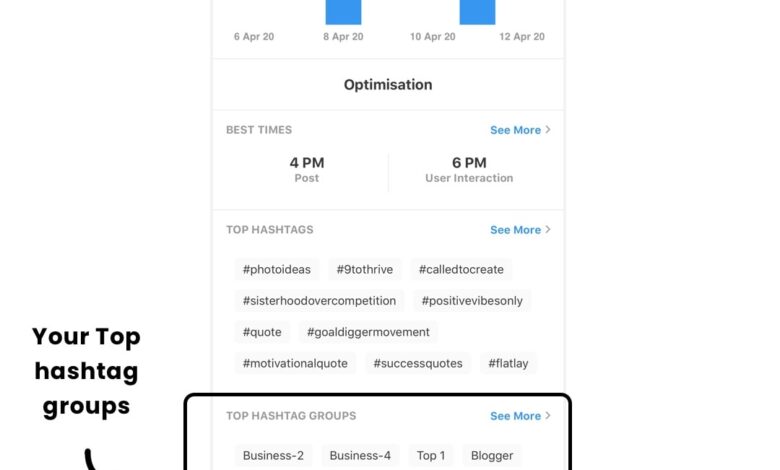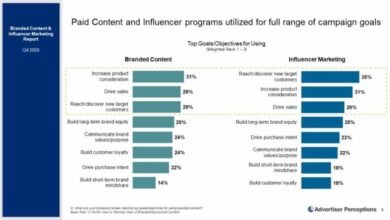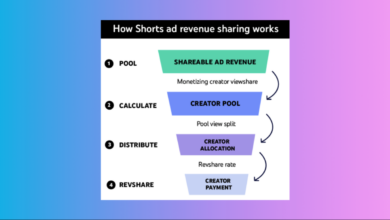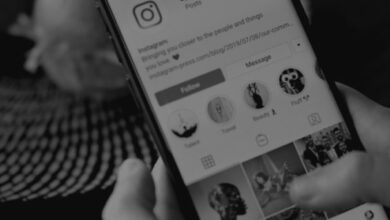
Instagram Hashtag Analytics Maximize Your Reach
Instagram hashtag analytics maximize your reach, unlocking the secrets to boosting your online presence. This deep dive explores how to leverage hashtag strategies to expand your audience and drive engagement. We’ll unravel the intricate relationship between hashtags, reach, and engagement metrics, providing actionable insights for optimizing your Instagram game.
From understanding different types of hashtags to analyzing performance data, we’ll equip you with a comprehensive toolkit to craft a winning hashtag strategy. We’ll delve into selecting relevant hashtags, tracking performance, and adapting your approach to maximize impact. This guide is your roadmap to Instagram success.
Understanding Instagram Hashtag Analytics
Instagram hashtag analytics provide valuable insights into the performance of your posts and the overall reach of your brand. By understanding how these analytics work, you can optimize your hashtag strategy for maximum impact. This understanding allows for better targeting and more effective content creation.Hashtag analytics reveal patterns and trends, helping you identify what resonates with your audience. This data is crucial for refining your content strategy and increasing your visibility on the platform.
How Instagram Hashtag Analytics Function
Instagram’s algorithm analyzes the hashtags you use in your posts, linking them to relevant content and users. This process identifies potential audiences and suggests relevant content. Hashtags influence the algorithm’s recommendations, directly impacting visibility and discoverability. The algorithm considers factors like post engagement, user interactions, and hashtag popularity when determining the reach of a post. This interplay between user activity and algorithm behavior is crucial for understanding hashtag effectiveness.
Metrics for Hashtag Performance
Several key metrics provide insights into hashtag performance. These metrics allow you to assess the effectiveness of different hashtags and adjust your strategy accordingly. Understanding these metrics is vital for optimizing your hashtag strategy.
- Reach: The number of unique accounts that saw your post due to the hashtag.
- Impressions: The total number of times your post was displayed, regardless of whether it was viewed or not. High impressions suggest high visibility but don’t necessarily translate to engagement.
- Engagement Rate: The percentage of users who interacted with your post (likes, comments, shares). A higher engagement rate indicates that the hashtag is attracting more interest and interaction.
- Click-Through Rate (CTR): The percentage of users who clicked on a link in your post after seeing it. This metric is particularly important for posts with call-to-action elements, indicating the effectiveness of your hashtag in driving traffic.
- Saves: The number of times your post was saved by users. Saves are a significant metric for indicating potential future engagement or interest in your content.
Hashtag Usage and Reach
The relationship between hashtag usage and reach is multifaceted. Effective hashtags attract more potential viewers, increasing your post’s visibility. Using relevant and popular hashtags can significantly expand your reach. However, overusing irrelevant hashtags can negatively impact your reach and make your posts less appealing. A balanced approach is key to optimizing your hashtag strategy.
Engagement and Hashtag Effectiveness
Engagement levels (likes, comments, saves) directly correlate with hashtag effectiveness. Hashtags that generate high levels of engagement often indicate a strong connection with the target audience. This connection can be measured by the engagement metrics mentioned above.
Interpreting Hashtag Data
Interpreting hashtag data involves examining various aspects of the metrics. For example, analyzing reach, impressions, and engagement together can provide a comprehensive understanding of a hashtag’s impact. Looking at trends over time can reveal patterns in user interaction, helping you adapt your strategy accordingly. This analysis can uncover insights into user preferences and tailor your content for better results.
Comparison of Hashtag Types
| Hashtag Type | Typical Performance | Example |
|---|---|---|
| Trending Hashtags | High reach, but potentially less targeted; may experience rapid fluctuations in performance | #summervibes, #newrelease |
| Niche Hashtags | Targeted reach, potentially high engagement; can be more effective in reaching a specific audience | #veganrecipes, #sustainableliving |
| Branded Hashtags | Brand awareness, targeted reach; can be used to track brand mentions and build community | #MyFavoriteBrand, #ShopWithUs |
A balanced approach using trending, niche, and branded hashtags is often the most effective strategy for maximizing your reach and engagement. The table above offers a glimpse into the typical performance of each type. Analyzing the performance of different hashtag types allows for the tailoring of your strategy to achieve specific goals.
Maximizing Reach Through Hashtag Strategy: Instagram Hashtag Analytics Maximize Your Reach
Unlocking the power of Instagram hashtags is crucial for expanding your reach and connecting with your target audience. Effective hashtag strategies go beyond simply piling on random terms; they involve a calculated approach to selecting, researching, and implementing hashtags that resonate with your niche and content. This process allows for targeted visibility and increased engagement.A well-planned hashtag strategy is like a carefully crafted map, guiding your content to the right audience.
By understanding the nuances of hashtag performance, you can ensure your posts are discovered by the individuals most likely to be interested in your brand, products, or services. This targeted approach leads to higher engagement and a more effective return on your Instagram efforts.
Selecting Relevant and Effective Hashtags
Choosing the right hashtags is paramount to maximizing your reach. Generic or irrelevant hashtags will likely get lost in the noise. Instead, focus on hashtags that accurately reflect the content of your posts. This ensures that your posts are discovered by users genuinely interested in the topic. This approach will increase your chances of engaging with the right audience and boosting your overall reach.
Researching High-Performing Hashtags
Thorough hashtag research is essential for identifying high-performing terms for your specific niche. Tools like Instagram’s own search bar, third-party analytics platforms, and competitor analysis can help you uncover popular and relevant hashtags. By understanding what your competitors are using, you can identify trending terms and refine your strategy to stand out.
Identifying and Using Trending Hashtags
Staying ahead of the curve is key. Trending hashtags reflect current interests and discussions, providing an opportunity to reach a broader audience. Monitoring trending topics on social media and platforms like Twitter, and utilizing hashtag tracking tools, can help you identify trending hashtags and incorporate them strategically into your posting schedule. This allows your content to connect with trending conversations and gain a wider reach.
Optimizing Hashtags for Diverse Target Audiences
Different demographics often respond to different hashtags. Understanding your target audience’s interests and online behavior is crucial. Consider the language, jargon, and preferences that resonate with your ideal customer base. By adapting your hashtags to different audience segments, you can effectively reach a broader range of potential customers.
Tailoring Hashtags for Specific Content Types
The type of content you share should inform your hashtag choices. For example, a product launch might benefit from different hashtags than a behind-the-scenes look at your business. Understanding the nuances of each content type will allow you to tailor hashtags for maximum impact.
Instagram hashtag analytics are crucial for maximizing your reach, but effective reposting strategies can also significantly boost your visibility. Knowing how to repost on Instagram, like the two easy methods detailed in this guide how to repost on instagram two easy ways to reshare , can help you amplify your content and engage a wider audience. Ultimately, smart use of both hashtag strategies and reposting techniques will help you maximize your Instagram presence.
Balancing Popular and Niche Hashtags
A balanced approach is essential. While popular hashtags can increase visibility, using niche hashtags helps target a more focused audience. Combining popular and niche hashtags allows you to reach a wider audience while still engaging with a specific segment.
Hashtag Research and Selection Process
| Step | Action | Tools/Resources |
|---|---|---|
| 1 | Define Niche and Target Audience | Market research, customer data, competitor analysis |
| 2 | Identify Relevant s | Google Trends, research tools |
| 3 | Research Existing Hashtags | Instagram search, third-party analytics tools |
| 4 | Analyze Hashtag Performance | Instagram Insights, competitor analysis |
| 5 | Select a Combination of Popular and Niche Hashtags | Consider reach and relevance |
| 6 | Monitor and Adjust Strategy | Track hashtag performance, adapt to trends |
Analyzing Hashtag Performance for Improvement

Hashtag performance isn’t static; it evolves with trends and audience engagement. Understanding how your hashtags perform over time is crucial for maximizing reach and ensuring your content resonates with the right audience. This involves more than just picking popular hashtags; it’s about strategic application and adaptation.Analyzing hashtag performance allows for targeted adjustments, leading to better results and a more effective Instagram strategy.
This proactive approach ensures that your chosen hashtags remain relevant and continue to attract the desired audience.
Tracking and Monitoring Hashtag Performance
Understanding hashtag performance requires consistent monitoring. Tools like Instagram Insights, third-party analytics platforms, and even dedicated hashtag tracking spreadsheets can provide invaluable data. Regularly checking the performance metrics of your hashtags helps you stay informed about their effectiveness.
Identifying Underperforming Hashtags
Identifying underperforming hashtags involves a comparative analysis. Compare engagement metrics (likes, comments, shares) and reach across different hashtags. Look for hashtags with low engagement rates, little to no reach, and a general lack of interaction. This proactive identification allows you to adjust your strategy before these hashtags significantly hinder your overall reach.
Adjusting Hashtag Usage Based on Real-Time Data
Real-time data is critical for optimal hashtag usage. This involves reviewing the performance of your hashtags in real time, rather than relying on historical data alone. Noticeable trends in engagement and reach will help you make dynamic adjustments to your hashtag strategy. By closely monitoring the immediate impact, you can optimize your hashtag use in real-time.
Adapting Hashtags Based on Changing Trends and Audience Interests
Hashtags should align with current trends and audience interests. Staying informed about trending topics and observing audience interactions will help you adapt your hashtags accordingly. Using trending hashtags allows you to reach a broader audience and align with current interests. Monitoring hashtags associated with trending topics can help you identify popular hashtags and adapt your strategy accordingly.
Analyzing the Overall Impact of Hashtags on Total Reach
Analyzing the overall impact of hashtags on total reach involves a holistic view of your Instagram strategy. Consider how different hashtags contribute to the total reach of your posts. This comprehensive approach helps identify the most impactful hashtags for your brand and content.
Knowing how to use Instagram hashtag analytics is key to maximizing your reach, but don’t underestimate the power of Instagram Stories Highlights. These can really elevate your profile and engage followers – check out how to use Instagram Stories Highlights to wow your followers for some seriously inspiring ideas. Ultimately, mastering both hashtag strategy and Stories Highlights will give you a significant edge in the Instagram game, leading to better hashtag analytics and a larger, more engaged audience.
Step-by-Step Procedure for Optimizing Hashtags Based on Data
| Step | Action | Data to Consider |
|---|---|---|
| 1 | Gather hashtag performance data from Instagram Insights or other analytics tools. | Engagement rates, reach, impressions, click-through rates. |
| 2 | Identify underperforming hashtags based on low engagement and reach. | Compare engagement and reach across different hashtags. |
| 3 | Analyze trending topics and audience interests. | Trending topics on Instagram, relevant s, and audience interactions. |
| 4 | Adjust hashtag usage based on real-time performance and identified trends. | Real-time engagement metrics, audience feedback, and trending topics. |
| 5 | Evaluate the overall impact of hashtags on total reach and engagement. | Compare reach and engagement metrics before and after hashtag adjustments. |
| 6 | Iterate and refine your hashtag strategy based on continuous monitoring and analysis. | Monitor changes in reach, engagement, and overall Instagram performance. |
Implementing a Successful Hashtag Strategy
A well-defined hashtag strategy is crucial for Instagram success. It allows businesses to connect with their target audience, increase brand visibility, and drive engagement. Effective hashtag use can significantly boost reach beyond followers’ usual feeds. This detailed guide will walk you through creating a comprehensive hashtag strategy, implementation plan, and methods for tracking and measuring ROI.
Designing a Comprehensive Hashtag Strategy for a Fictional Business Account
A successful hashtag strategy begins with understanding your target audience and their interests. For instance, a fictional vegan bakery, “The Daily Oat,” targeting health-conscious millennials and Gen Z, would use a combination of broad and niche hashtags. Broad hashtags like #veganfood, #healthyfood, #bakery attract a wider audience, while more specific ones like #veganbaking, #glutenfreebakery, #plantbasedrecipes, or location-based hashtags, like #veganbakery[city name], help connect with those actively searching for these products or services.
A thorough research on social media platforms and relevant search engines is essential for identifying the most relevant hashtags.
Hashtag Strategy Implementation Plan
A well-structured implementation plan ensures your strategy is executed effectively. This plan should include a timeline, assigning responsibilities, and defining clear goals for each phase.
- Phase 1 (Week 1-2): Research & Strategy Development: Conduct thorough research and identify relevant hashtags for your brand. This includes analyzing competitor hashtags and identifying trending topics within your niche. Develop a comprehensive list of hashtags, categorized by relevance and scope. For example, broad, niche, and location-specific hashtags can be categorized for easier management.
- Phase 2 (Week 3-4): Content Calendar Integration: Integrate the chosen hashtags into your content calendar, ensuring consistent use across posts. Develop a posting schedule to maintain a regular presence on Instagram. This might involve posting daily, every other day, or a few times a week, depending on the specific goals and resources of the business. Ensure that hashtags are used strategically in the caption and image/video.
- Phase 3 (Week 5-8): Monitoring & Optimization: Track hashtag performance using social media management tools. Analyze engagement metrics, such as likes, comments, and shares. Monitor trending hashtags and adapt your strategy accordingly. Regularly review and adjust the hashtag list based on the performance data collected. For example, hashtags that show low engagement might be removed, and those performing well can be used more frequently.
Examples of Effective Hashtag Strategies
This table showcases examples of effective hashtag strategies across different industries.
| Industry | Broad Hashtags | Niche Hashtags | Location Hashtags |
|---|---|---|---|
| Vegan Bakery | #veganfood, #healthyfood, #bakery | #veganbaking, #glutenfreebakery, #plantbasedrecipes | #veganbakery[city name] |
| Fitness Studio | #fitness, #workout, #gym | #yoga, #pilates, #strengthtraining | #fitnessstudio[city name] |
| Fashion Boutique | #fashion, #style, #clothing | #sustainablefashion, #ecofriendlyfashion, #streetwear | #boutique[city name] |
Content Calendar Example
A content calendar helps organize posts and ensure consistent brand messaging. It includes the post date, content type (image, video, carousel), caption, and hashtags. A sample entry might be:
- Date: October 26, 2024
- Content Type: Image
- Caption: “Introducing our new autumn collection! Cozy up with our latest arrivals.”
- Hashtags: #autumnfashion, #fallstyle, #newcollection, #cozystyle, #[boutique name]
Tracking Hashtag Performance
Social media management tools provide insights into hashtag performance. For example, Hootsuite, Buffer, or Sprout Social can track hashtag usage, engagement, and reach. These tools often allow you to monitor the performance of specific hashtags, measure the reach and impressions of your posts, and identify the most effective hashtags for your brand.
Knowing how to use Instagram hashtag analytics is key to maximizing your reach, especially for a boutique clothing store. Smart use of hashtags can significantly boost visibility, but managing your social media presence effectively can be tricky. Fortunately, there are affordable solutions for boutique clothing stores like cheap social media management for boutique clothing stores , which can help you focus on growing your brand through creative content and targeted hashtags.
Understanding your audience and tailoring your hashtag strategy will ultimately maximize your impact on Instagram.
Measuring ROI of a Hashtag Strategy
Measuring the ROI of a hashtag strategy involves correlating hashtag usage with sales or website traffic. For instance, if a specific hashtag campaign results in a notable increase in website visits or online orders, this would demonstrate a positive ROI. Tracking relevant metrics like website clicks from Instagram, conversion rates from hashtag-related posts, and revenue generated from specific campaigns can help quantify the return on investment.
Using analytics dashboards can provide a clear picture of the relationship between hashtag engagement and business growth.
Visualizing Hashtag Performance Data

Unlocking the power of Instagram hashtags requires more than just a gut feeling. It’s about understanding the data behind your efforts. Effective visualization is key to transforming raw hashtag analytics into actionable insights. This section will dive into practical methods for representing your hashtag performance, making it easy to spot trends and optimize your strategy.Visualizing hashtag performance data empowers you to see patterns and relationships instantly.
This translates to more efficient hashtag selection, improved content engagement, and ultimately, higher reach. Transforming numbers into visuals allows you to quickly identify what’s working, what’s not, and how to fine-tune your strategy for maximum impact.
Creating a Visual Representation of Hashtag Usage and Reach
A compelling infographic is an excellent way to present the relationship between hashtag usage and reach. It should visually display the correlation between the number of times a hashtag is used and the resulting impressions or engagement. Consider a line graph, where the x-axis represents the frequency of hashtag use and the y-axis represents the reach achieved. Color-coding different hashtags can make comparisons easy.
This infographic can easily highlight which hashtags generate the most reach and which ones underperform.
A Flowchart for Hashtag Analysis and Optimization
A flowchart provides a structured approach to hashtag analysis and optimization. Start with defining your goals (e.g., increasing brand awareness, driving sales). Next, identify the relevant hashtags for your niche. Then, track the performance of these hashtags using Instagram Insights. Analyze the data to identify top-performing hashtags and patterns.
Based on your analysis, optimize your hashtag strategy, perhaps by experimenting with new hashtags or adjusting your posting frequency. Finally, continuously monitor and adjust your strategy based on the latest data. This cyclical process ensures your hashtag strategy stays relevant and effective.
A Sample Hashtag Performance Dashboard
A sample dashboard for monitoring hashtag performance should be user-friendly and visually intuitive. It should include key metrics like impressions, reach, engagement (likes, comments, shares), and click-through rates (if applicable). Different sections could focus on individual hashtag performance, trending hashtags, and overall campaign performance. This dashboard allows you to quickly assess the effectiveness of various hashtags and make data-driven decisions.
Consider using color-coded bars or charts to highlight key metrics and trends.
Leveraging Data Visualization Tools for Hashtag Insights
Data visualization tools are essential for effectively communicating hashtag insights. Tools like Google Data Studio or Tableau can transform your raw data into interactive dashboards. These tools provide a range of charting options (bar charts, line graphs, pie charts) to present your findings in a clear and compelling manner. The flexibility of these tools allows you to tailor the presentation to specific needs and audiences.
Creating Interactive Graphs from Hashtag Analytics, Instagram hashtag analytics maximize your reach
Creating interactive graphs from hashtag analytics provides a dynamic way to explore data. Start by importing your hashtag data into a spreadsheet program. Then, choose the appropriate chart type (e.g., line graph, bar chart, scatter plot). Use the chart’s interactive features to drill down into specific data points and compare different hashtags. For example, hover over data points on a line graph to see the exact reach for a particular hashtag on a specific date.
Adding tooltips to graphs further enhances the user experience.
Presenting Hashtag Performance Data Effectively
Present hashtag performance data in a format that’s easy to understand and interpret. Use charts, graphs, and tables effectively. Bar charts are ideal for comparing hashtag performance. Line graphs can show trends over time. Pie charts are useful for visualizing the distribution of engagement across different hashtags.
Tables are great for presenting detailed numerical data. Remember to use clear labels, titles, and legends to ensure your visualizations are easy to comprehend. Choose a format that best conveys the insights you want to communicate. For example, a bar chart might highlight the top-performing hashtags, while a line graph could illustrate the trend of reach over a period of time.
Conclusion
In conclusion, mastering Instagram hashtag analytics is key to maximizing your reach. By understanding the interplay between hashtags, engagement, and audience, you can build a powerful strategy that propels your brand forward. This guide has provided the essential framework; now, it’s time to put it into action and witness the results. Remember, consistent analysis and adaptation are vital to sustained success.





